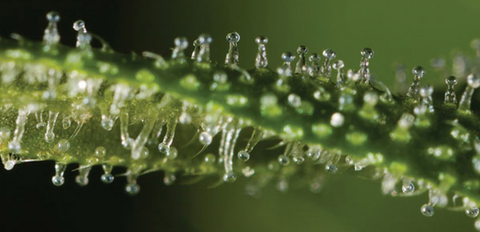Cannabis terpenes, everything you need to know.
As cannabis becomes more and more mainstream and the conversations around cannabinoids like CBD, CBG, and THC intensify, another star is beginning to rise: the terpene.
Terpenes and terpenoids are the key elements behind the scent and smell of Cannabis, but that’s not all there is to them. So let’s have a closer look at these wonderful compounds.
What is a terpene?
Terpenes and terpenoids are molecules synthesized in plants that contain a multiple of 5 carbon units. While terpenes are hydrocarbons (they only contain Carbon and Hydrogen atoms), terpenoids can include other elements such as oxygen that form so-called functional groups. These molecules are what give many plants, flowers, and fruits their characteristic fragrance and flavor. The classic lavender scent, for example, is largely caused by the linalool terpene and that lovely appetizing smell when you peel a citrus fruit stems from limonene and tiny quantities of citral! Menthol is responsible for the refreshing taste of mint leaves and myrcene is an elemental part of a mangos tropical smell and flavor.
If all of that sounds too abstract, think of essential oils. While terpenes and essential oils are not the same things, most essential oils contain high quantities of terpenes. Lemon essential oil, for example, is 94% limonene!

What do terpenes do?
Terpenes are hugely important signal molecules for plants. They can, for example, help to deter pests and attract beneficial insects. As such, they are also part of natural agricultural pesticides.
Because of their flavor and fragrance properties, terpenes are also widely used in the food and cosmetics industries, either as part of the plants or plant extracts (like essential oils) used in the process or in isolated form.
More recently, the growth of the cannabis industry has lead to a new interest in terpenes, as they are thought to be involved in the so-called entourage effect. This effect describes how ingredients in cannabis act synergistically to modulate the overall effects of the plant. In a 2011 article published in the British Journal of Pharmacology, Dr. Russo demonstrated the synergy between the various compounds, effectively setting off a chain of events leading us to the present day.
Terpenes in Cannabis
It should be clear by now that terpenes are not exclusive to Cannabis, but occurring in thousands of plants all over the world. Nevertheless, their role in cannabis is special, as the unique terpene profiles help us to differentiate and navigate the different strains and breeds and thus discover and unlock their full potential. Every cannabis strain produces terpenes at varying levels. This unique combination gives each its distinct taste and smell.
The cannabis industry has begun creating special terpene formulations to match the familiar flavor profiles of the world’s favorite cannabis strains. A Harmony favorite, for example, is OG Kush, a combination of nearly equal parts of limonene, myrcene, and beta-Caryophyllene that creates a balanced, clean, and smooth gust of flavor.

The Takeaway
Terpenes are what give plants their unique flavor and fragrance and there are countless applications of terpenes across all industries, including the food, cosmetics, beverage and pharmaceutical sectors. In the special case of cannabis, terpenes are thought to interact with cannabinoids and their very presence can affect the way you will react to a certain strain. This is called the entourage effect.
If you feel inspired to learn more about terpenes or even add some to your favorite products, you can find out more about our blends by browsing the Harmony Terpenes product pages.
